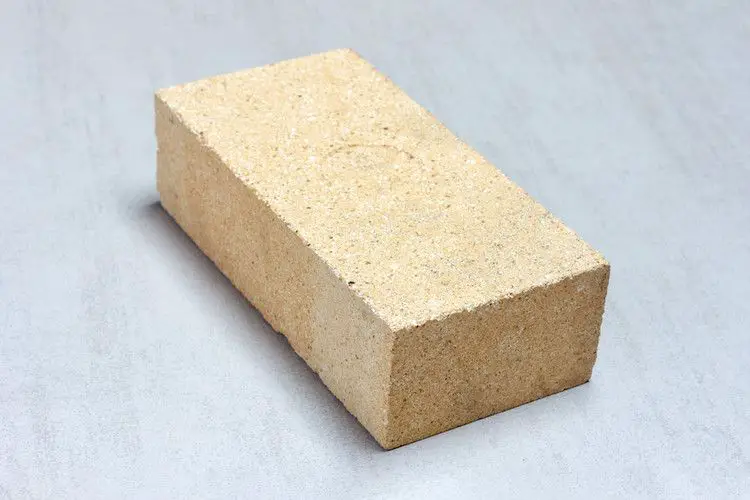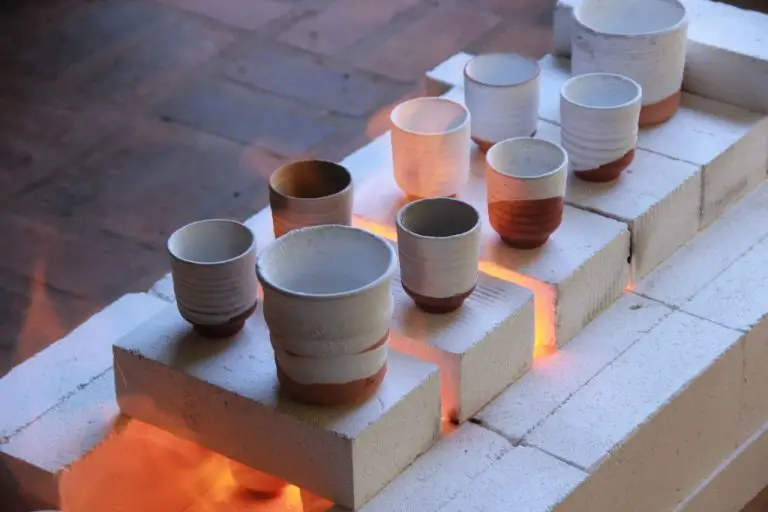What Is A Refractory Brick?
What Are Refractory Bricks?
Refractory bricks are a type of brick designed to withstand high temperatures, typically used in industrial furnaces, kilns, fireplaces, and other high-heat applications. They have a very high melting point and maintain their strength and form at high temperatures where regular bricks would fail or melt.
Refractory bricks are most commonly made from fire clays, which are composed primarily of alumina and silica. Other common refractory brick materials include high-alumina bricks with over 45% alumina content, silica bricks composed mainly of quartz, magnesite bricks containing 80-98% magnesia, and chromite bricks containing a chromium oxide compound (Source: https://en.wikipedia.org/wiki/Fire_brick). The raw materials are formed and fired at high temperatures up to 1650°C to create a strong, dense brick.
The key properties of refractory bricks that allow them to withstand intense heat are:
- High melting point – typically over 1580°C
- Great thermal stability – maintain strength at high temperatures
- Low thermal conductivity – resist transferring heat
- Resistance to thermal shock – can withstand rapid temperature changes
- Great porosity – insulate and reduce heat flow
How Are Refractory Bricks Made?
Refractory bricks are made through a multi-step manufacturing process that involves preparing the raw materials, shaping the bricks, and firing them in a kiln. The basic steps are:
Overview of manufacturing process:
- Selecting and preparing raw materials like fire clays, alumina, silica, and magnesium oxide.
- Blending the raw materials and adding water to form a mixture with the right plasticity and strength.
- Shaping the brick mix into molds and drying.
- Firing the bricks at high temperatures up to 1500°C or higher to achieve strength.
Preparation of raw materials:
The raw materials are selected based on the desired properties of the final refractory brick. They typically include aluminosilicate materials like bauxite, fire clay, alumina, and silica sand. These materials are crushed, graded, and blended together in specific proportions along with additives.
Shaping and firing:
The prepared raw material mix is pressed into molds, extruded, or formed by hand to achieve the desired brick shape. The green bricks are air-dried to remove moisture. Firing at high temperatures up to 1800°C causes sintering and vitrification that gives the bricks mechanical strength, corrosion resistance, and thermal properties.
Types of Refractory Bricks

There are several different types of refractory bricks, each with specific properties and applications:
Fire Clay Bricks
Fire clay bricks are composed of 30-40% alumina and 50-60% silica. They have good resistance to abrasion and corrosion by alkali attacks. Fire clay bricks are commonly used in blast furnaces, fire places, cement kilns, etc. (Source)
High Alumina Bricks
High alumina bricks contain over 45% alumina and under 50% silica. They have high refractoriness, meaning they can withstand very high temperatures. These bricks are used in areas subject to high temperatures like the inner walls of steel melting furnaces. (Source)
Silica Bricks
Silica bricks consist of over 93% silica. They have low thermal conductivity, which provides effective insulation. Silica bricks are utilized in areas like glass melting furnaces and coke ovens. (Source)
Magnesite Bricks
Magnesite bricks contain over 85% magnesium oxide. They have excellent resistance to basic slags. These bricks are used in areas of high temperature and basic slags such as cement kilns and electric furnaces. (Source)
Refractory Brick Shapes
Refractory bricks come in many different shapes and sizes for various applications. Some of the most common refractory brick shapes include:
Standard Bricks
Standard refractory bricks are rectangular in shape and have standard dimensions of 9″ x 4.5″ x 2.5″. They can be used to build refractory walls and linings in furnaces, boilers, fireplaces, and other high-temperature equipment. Standard bricks are easy to install and offer good thermal performance [1].
Wedge Bricks
Wedge-shaped refractory bricks have a tapered profile and are used to build arches or curved sections. They are interlocked in concentric rings and have tapered sides. Wedges provide strength and stability in high-temperature curved structures. They help distribute stress and support arches.
Bullhead Bricks
Bullhead bricks, also known as header bricks, have a projecting header on one face. They are used to bond refractory walls together and provide interlocking connections between courses of bricks. The headers help hold the refractory in place.
Arches
Refractory arches are made from tapered or wedge-shaped bricks. They have an arched design and are installed above furnace openings. Refractory arches support masonry above furnace openings and help retain heat in high-temperature environments.
Refractory Brick Applications
Refractory bricks have important applications in high-temperature industrial processes. Some of the key industries that utilize refractory bricks include:
Steel Industry
The steel industry relies heavily on refractory bricks to line furnaces, ladles, tundishes, and other equipment. Refractory bricks withstand the extreme temperatures needed to melt, refine, and cast steel. Common applications include linings for basic oxygen furnaces, electric arc furnaces, induction furnaces, and ladle metallurgy stations.
Glass Industry
Glass manufacturing involves heating raw materials like silica sand to temperatures over 1000°C. Refractory bricks line glass furnaces, forehearths, and other parts of the glassmaking process. Key applications include glass tank crowns, regenerator crowns, and working end arches where the molten glass contacts the refractory surface.
Cement Industry
Refractory bricks line cement kilns to withstand the high heat needed for clinker production. Bricks protect the steel shell and retain heat inside the kiln. Key applications are in the burning zone or flame tunnel where temperatures can exceed 2000°F.
Incinerators
Incinerators for waste disposal rely on refractory brick linings to contain the heat of combustion. Bricks protect the steel shell and withstand temperatures up to 1600°C. Applications include refractory linings in municipal solid waste incinerators, medical waste incinerators, and hazardous waste incinerators.
Refractory Brick Standards
Refractory bricks must meet certain standards for quality and performance set by various organizations. The main standards bodies that publish standards for refractories are:
- ASTM International – ASTM has over 80 standards relating to refractory materials including testing methods, specifications, classifications, and guides. Some key ASTM standards for refractory bricks include ASTM C27 on chemical analysis and physical testing and ASTM C71 on refractory brick shapes.
- ISO – The International Organization for Standardization sets global standards including ISO 1927 on physical testing methods, ISO 2245 on chemical analysis, and ISO 5013/5014 on determination of refractoriness.
- National standards organizations like DIN in Germany, AFNOR in France, and JIS in Japan also publish standards for testing and specification of refractory products.
Key properties and metrics evaluated by these standards include refractoriness, load behavior, porosity, density, strength, thermal conductivity, erosion resistance, and chemical composition. Compliance with applicable standards ensures quality control and enables comparison between different refractory materials.
Factors Affecting Performance
There are several key factors that can affect the performance and lifespan of refractory bricks:
Raw Materials
The raw materials used to manufacture refractory bricks have a significant impact on properties like strength, thermal shock resistance, corrosion resistance, and refractoriness. Key raw materials include various types of refractory clays, silica, alumina, magnesia, and silicon carbide. The purity and quality of the raw materials is critical.
According to an article on LinkedIn The factors affecting the performance of refractory castables, high purity materials like calcined alumina generally yield better performing refractory bricks.
Manufacturing Process
The manufacturing process can also influence refractory brick performance. Important factors include the mixing process, molding pressure, firing time and temperature. Well-controlled processing is required to achieve optimal strength, density, porosity, and homogeneity.
Operating Conditions
The conditions in which the refractory bricks are used significantly impact their lifespan. Critical factors are the temperature, thermal cycling, chemical exposure, abrasion, and mechanical stress. More extreme conditions require higher quality refractory materials.
Proper installation and maintenance practices are also essential for getting the desired performance from refractory brick linings. Precautions like minimizing thermal shock and preventing chemical attack are key.
Refractory Brick Failure
There are three main causes of refractory brick failure:
Thermal Shock: Sudden temperature changes can create cracks and spalling in refractory bricks, especially during start-up and shutdown of kilns or furnaces. Thermal shock occurs when the temperature rises too rapidly, causing abrupt thermal expansion. Similarly, rapid cooling can cause contractions and stresses. Proper heating and cooling procedures can help minimize thermal shock. According to this source, regular inspection and maintenance can help identify and address thermal shock issues early: https://www.bicmagazine.com/resources/sponsored-content/five-common-causes-of-refractory-failure-and-how-to-fix-them/
Chemical Attack: Certain fuels, slags, and process materials can react with and erode refractory bricks over time. Acidic compounds in particular can corrode bricks and mortar joints. Ensuring compatibility between the refractory materials and the specific process environment is crucial. Routine inspection of brick condition can identify chemical attack before failure occurs. Proper maintenance procedures should be followed to counteract any chemical degradation.
Mechanical Wear: Physical abrasion and stress from operations can wear down refractory brick surfaces and connections. Vibration, thermal cycling, and mechanical impact like from clinkers or charge materials can gradually degrade the bricks. Regular visual checks for cracks/spalling and monitoring vibration levels can help minimize mechanical wear. Maintenance teams should promptly patch or replace significantly worn bricks.
Refractory Brick Maintenance
Proper maintenance is crucial for maximizing the life and performance of refractory bricks. Regular inspections, repairs, and replacements can prevent premature failures. Some key maintenance activities include:
Inspections: Visual inspections should be conducted regularly to check for any cracks, wear, erosion, or damage. Thermal imaging can also help detect hot spots and issues not visible to the naked eye. Any problems found should be documented and scheduled for repair.[1]
Repairs: Minor cracks and wear can often be repaired by patching or filling with refractory materials. Larger cracks may require removing and replacing individual bricks. Prompt repairs prevent further degradation and more extensive rebuild work.
Replacement: Over time, the refractory lining will require replacement. The schedule depends on factors like temperature, cycle frequency, and quality of bricks. When 25-50% of bricks show moderate to severe wear, full relining should be considered.[2] Gradual replacement of only the most damaged bricks can extend the overall lining life.
With disciplined maintenance and attention, refractory brick linings can last upwards of 5-10 years before requiring full replacement. This preserves the capital investment and avoids process disruptions from emergency rebuilds.
[1] https://www.linkedin.com/pulse/why-refractory-maintenance-important-hongtai-
[2] https://mcneilusa.com/blog/replacing-refractory-materials/
The Future of Refractory Bricks
Refractory bricks are constantly evolving to meet the demands of high-temperature industries. Here are some key innovations shaping the future of refractory bricks:
Improved Materials
New materials like silicon carbide, zirconia, and alumina are enabling higher heat resistance, longer service life, and improved thermal shock resistance. For example, silicon carbide bricks can withstand temperatures above 1600°C. Refractory producers are also fine-tuning brick chemistries to optimize properties. According to market research, demand for high-performance refractories will continue rising globally.
Automated Manufacturing
Automating aspects of the refractory production process enables more consistent quality. Robotics and computer-controlled equipment are being adopted for mixing, molding, and firing refractory bricks. This improves precision and frees workers from hazardous environments. Automation also aids customization and rapid prototyping of specialized brick designs.
Design Innovations
New brick shapes, sizes, and bonding patterns are emerging. For example, dogbone-shaped bricks resist mechanical stresses better than rectangular bricks. Refractory manufacturers are also developing bricks with improved insulating capabilities to conserve energy. Precast refractory shapes further speed installation and protect workers. According to industry forecasts, customized and value-added refractory products will grow in demand.



